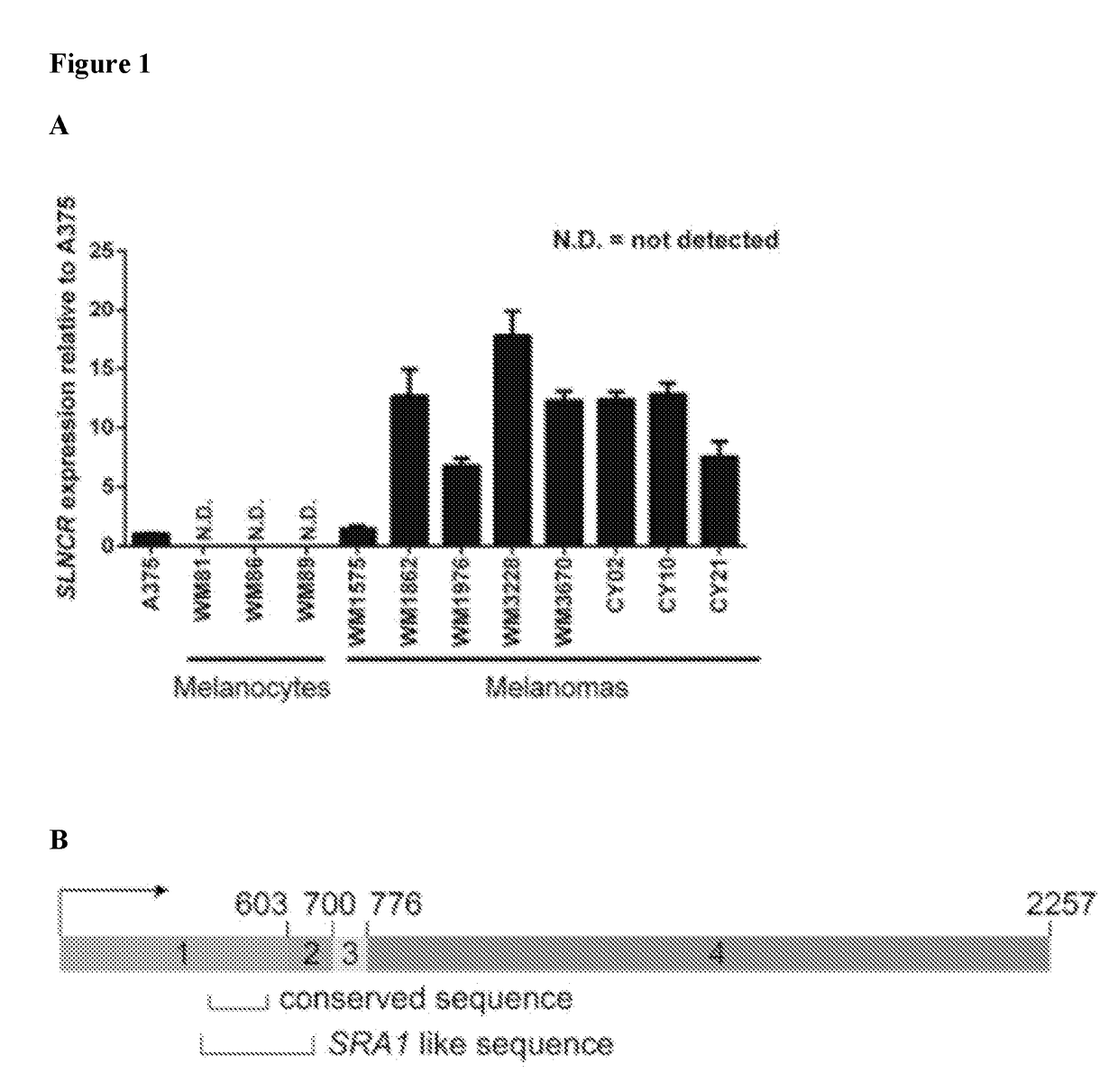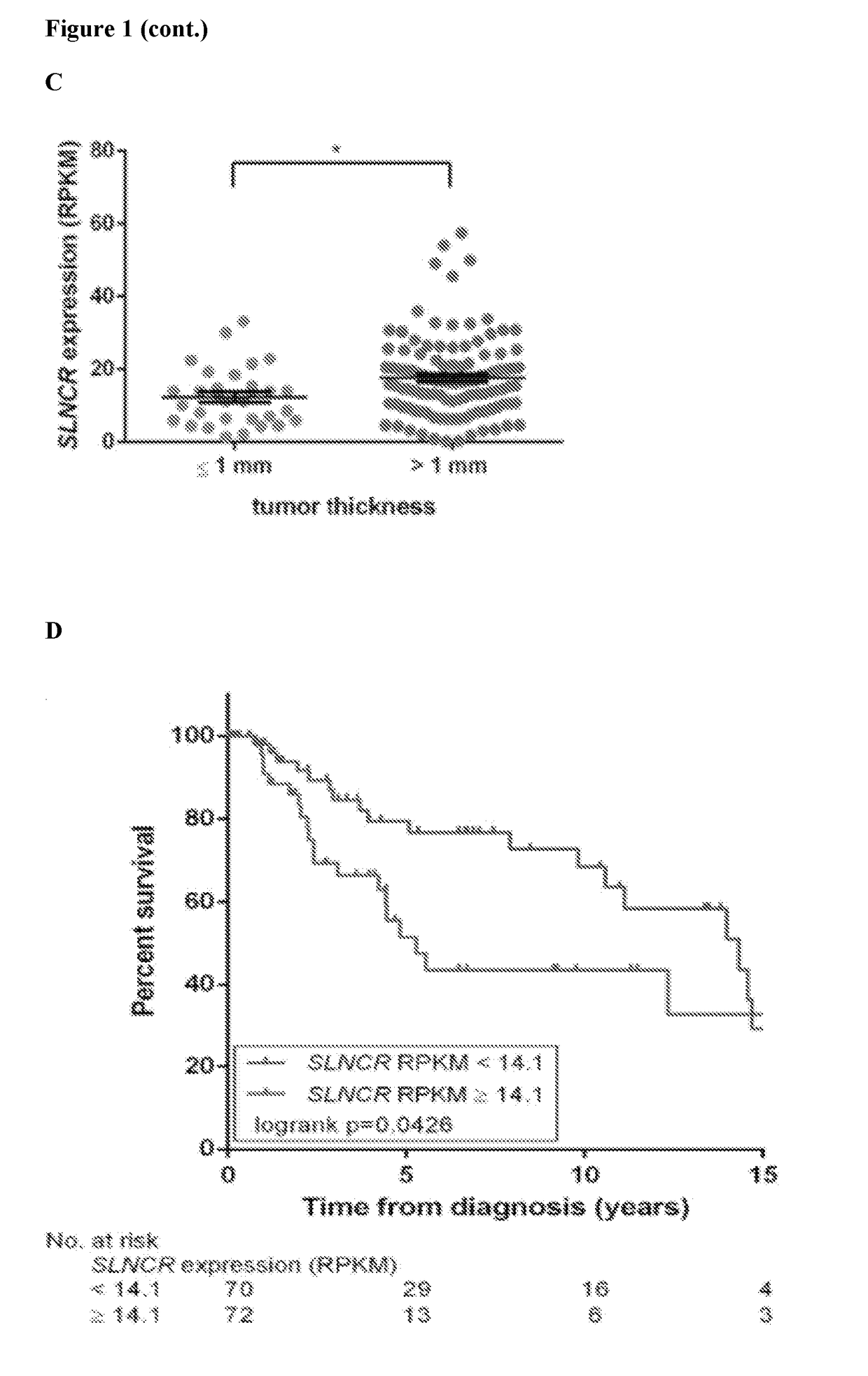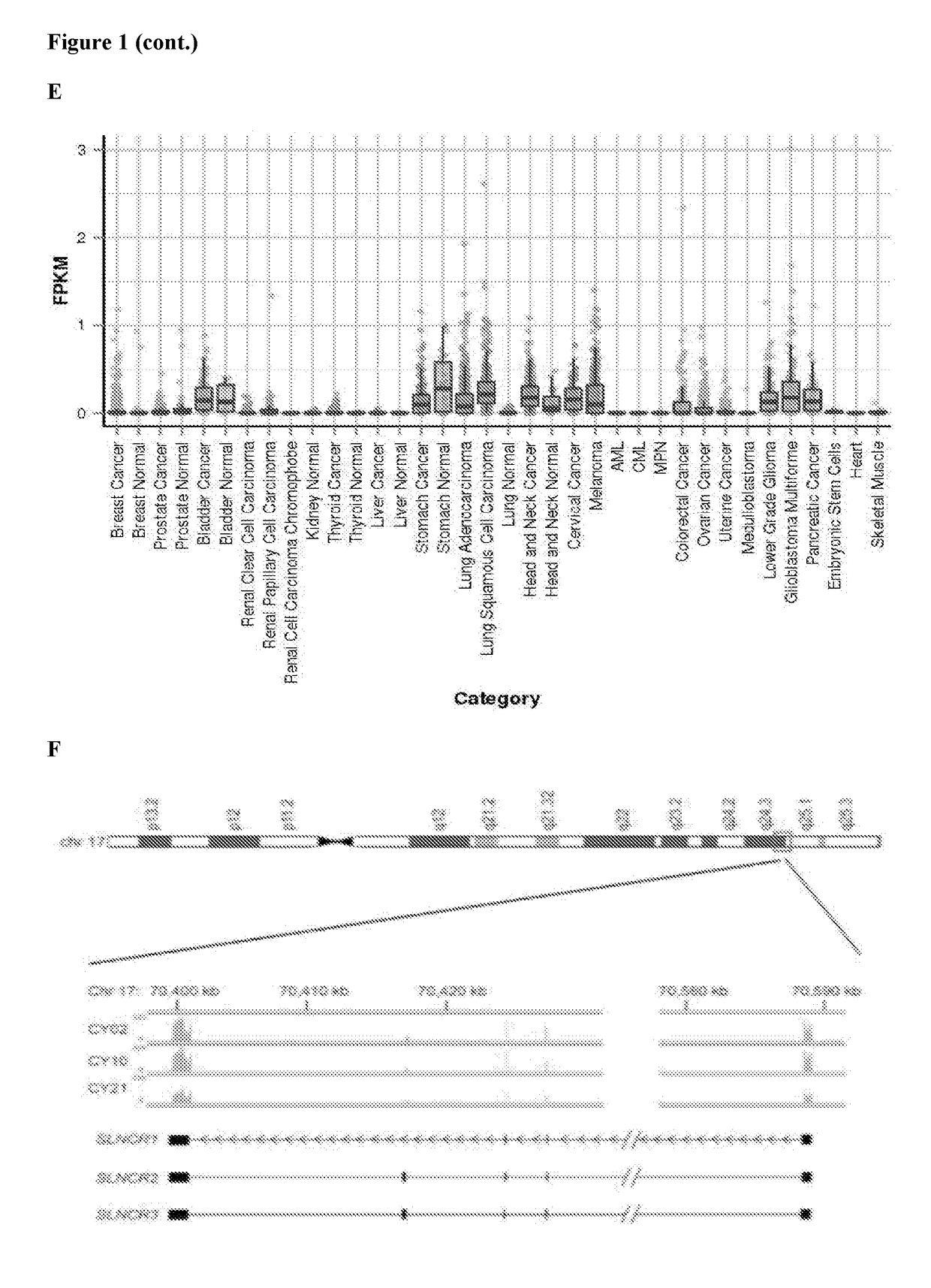Compositions and methods for identification, assessment, prevention, and treatment of cancer using slncr isoforms
a cancer and isoform technology, applied in the field of compositions and methods for cancer identification, assessment, prevention and treatment of slncr isoforms, can solve the problems of ineffective or ineffective traditional therapies for treating important maladies, inability to detect specific expression, so as to increase reduce the invasiveness of cancer cells, and increase the slncr expression
- Summary
- Abstract
- Description
- Claims
- Application Information
AI Technical Summary
Benefits of technology
Problems solved by technology
Method used
Image
Examples
example 1
and Methods for Examples 2-9
[0369]For cellular fractionation, cells were grown to ˜80% confluency in 10 cm tissue culture treated dishes and fractionated using Thermo Scientific™ NEPER™ Nuclear and Cytoplasmic Extraction Kit, according to manufacturer's instructions. Nuclear and cytoplasmic fractions were split for protein and RNA analysis.
[0370]For RNA-seq and qRT-PCR experiments, RNA was isolated using Trizol® (Life Technologies) and Qiagen RNeasy® Mini Kit and treated with DNase. cDNA was generated using SuperScript III (Invitrogen) reverse transcriptase. The indicated transcripts were quantified using Platinum® SYBR® Green qPCR SuperMix-UDG mix on a CFX384 Touch™ Real-Time PCR Detection System. Error bars represent standard deviations calculated from 3 reactions. For RNA-seq analyses, cDNA libraries were prepped using TruSeq® RNA Sample Prep kit v2 (Illumina) and sequenced on the HiSeq® 2500 (Illumina) at the BROAD institute. Cuffdiff (Trapnell et al. (2010) Nat. Biotech. 28:511...
example 2
A, SLNCR, is Dysregulated in Cancer, Including in Melanoma
[0377]In order to identify candidate lncRNAs involved in melanomagenesis, RNA sequencing (RNA-seq) was used to profile lncRNAs in three patient-derived melanomas. Linc00673, known hereinafter as SLNCR (SRA-like non-coding RNA), was identified as being highly expressed in the patient-derived melanomas, as well as in four additional melanoma short-term cultures (FIG. 1). Three different isoforms of SLNCR were detected using RNA sequencing of patient-derived melanomas (FIG. 2A). The most prevalent form of the lncRNA, referred to as SLNCR or SLNCR1 in the examples, is 2,257 nucleotides long and is composed of 4 exons spanning human chr17:70399463-70588943 as annotated according to the Human Genome Assembly GRCH37 / hg19. SLNCR2 (also referred to as SLNCR4a) and SLNCR3 (also referred to as SLNCR4b) contain an additional alternative short or long exon, respectively, located between exon 3 and 4. The SLNCR locus is located within a ch...
example 3
iated Knockdown of SLNCR Decreases Proliferation of Cancer Cells
[0379]Melanoma short-term cultures have undergone relatively few passages outside of the patient, accurately capturing the genetics of the disease, and have been well characterized (Lin et al. (2008) Cancer Res. 68:664-673). RT-qPCR results indicate that SLNCR is expressed in multiple melanoma short-term cultures tested. Therefore, siRNAs were used to knockdown endogenously expressed SLNCR and phenotypes were screened. The siRNA sequences used in these experiments were (5′ to 3′ direction): siRNA 1: TTAGGTCAAATAGGATCTAAA and siRNA 2: AAAGACGTTTACACCGAGAAA. As shown in FIG. 6, siRNA-mediated knockdown of SLNCR significantly decreased proliferation of WM1575 cells. Importantly, the siRNAs used in this assay do not distinguish between different SLNCR isoforms, and therefore decreases levels of SLNCR, SLNCR2 and SLNCR3.
PUM
| Property | Measurement | Unit |
|---|---|---|
| acid | aaaaa | aaaaa |
| length | aaaaa | aaaaa |
| nucleic acid | aaaaa | aaaaa |
Abstract
Description
Claims
Application Information
 Login to View More
Login to View More - R&D
- Intellectual Property
- Life Sciences
- Materials
- Tech Scout
- Unparalleled Data Quality
- Higher Quality Content
- 60% Fewer Hallucinations
Browse by: Latest US Patents, China's latest patents, Technical Efficacy Thesaurus, Application Domain, Technology Topic, Popular Technical Reports.
© 2025 PatSnap. All rights reserved.Legal|Privacy policy|Modern Slavery Act Transparency Statement|Sitemap|About US| Contact US: help@patsnap.com



